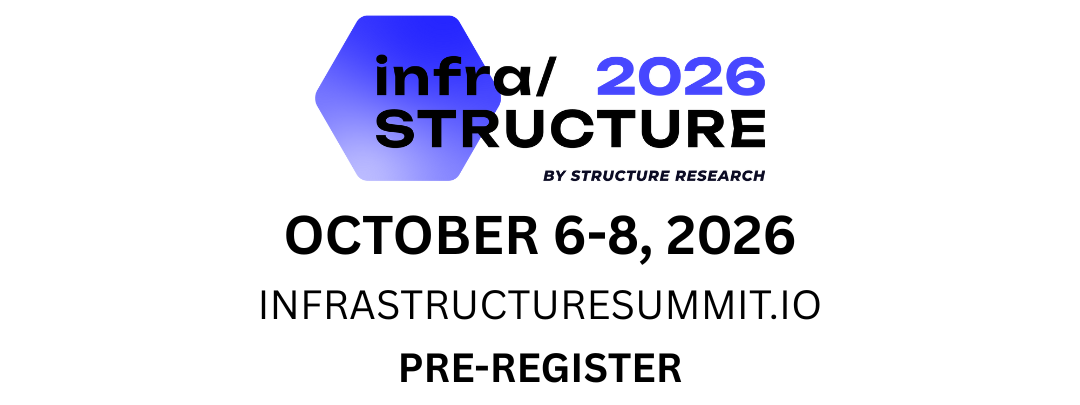WSS: Webscale earnings reveal more sector growth data points with compute a key driver; strategic moves reflect sector maturation process
It was another busy week for the sector, with more from earnings season and various notable developments across the broader cloud infrastructure ecosystem. In the past few weeks, we have taken a closer look at the results coming from the hyperscale space (AWS, Microsoft, Meta, Google) and the bellwether data centre operators (Equinix, Digital Realty). In the recent week, we dug into the webscale tier, with a look at Akamai and Cloudflare, while pushing further into the ecosystem and the chip producers such as Intel that are driving plenty of growth through the data centre and hyperscale space.
Akamai and Cloudflare did well, holding revenue growth steady and consistent, even as the respective management teams recognize the possibility of headwinds emerging in the wider macro and geopolitical environment. What was telling from both was the accelerating growth coming from raw cloud infrastructure services and the uplift in enterprise adoption. Both Akamai and Cloudflare have never been pureplays like a DigitalOcean or OVHcloud, and have shifted into cloud computing to drive new opportunities. But there are clear signs that these strategies are bearing fruit as both are seeing healthy compute growth and both won historically large deals from enterprise customers. For Cloudflare, the adoption of compute is coming ahead of schedule, while Akamai has an installed enterprise base that is starting to see the value of its cloud alternative. Both Akamai and Cloudflare have reported wins from hyperscalers and have provided raised guidance for their respective cloud computing infrastructure segments.
Webscale clouds are pushing adoption of data centre colocation, but the GPU clouds are adding more fuel to the fire. GPU cloud provider Lambda is becoming a big colocation consumer and will deploy infrastructure with Aligned Data Centers in Dallas, Texas. Meanwhile, CoreWeave reported its first quarterly earnings as a public company, which showed its continued aggressive growth trajectory (we will have details next week). GPU clouds are building infrastructure in data centre colocation environments, but hyperscale is often the actual driver. It is well known that CoreWeave has a significant book of business from Microsoft (and is said to be working with Google) and GPU cloud provider Nscale is working on funding that would be based largely on a deal to support ByteDance. Hyperscale is not just a direct consumer of data centre infrastructure, but an indirect one as well, with the GPU clouds providing both the cloud platform and data centre infrastructure together in a much faster time frame. Microsoft is on both sides of this and is reported to be working with xAI to potentially run its AI infrastructure on the Azure cloud. And speaking of ByteDance, we also tracked details of its working on a data centre in Finland.
The continued maturity of hyperscale and the developing state of GPU cloud is having a direct impact on the data centre colocation market. Operating platforms are increasingly making the decision to focus on this category and making big strategic decisions. Last week, STACK Infrastructure sold off part of its EMEA portfolio to focus on the hyperscale-oriented assets, and this week Sweden’s EcoDataCenter divested its retail colocation assets to take the same approach. This kind of strategic activity has been more common in the US market, given the state of its development, but is likely to continue spreading as regional markets around the world mature and reach levels of critical mass.
On the strategic side, things continue to push forward with strategic investments and lending geared to infrastructure building and expansion. They are among the many data points (we looked at CapEx recently and earnings season showed more evidence of supply actually being outpaced by demand) that point to healthy demand in the face of bearish views brought on by worries around overbuilding. On the lending side, Colovore and 11:11 Systems secured debt financing, while Princeton Digital Group raised over $1b (details next week) and NOVA Infrastructure acquired a majority stake in Dartpoints that has a significant growth capital component.
Another trend gaining ground on the strategic side if the push to acquire the underlying real estate assets that are home to data centres. Just in the past week, Flexential acquired real estate supporting certain data centres in Atlanta, while DataBank bought land in New Jersey. Acquiring the land provides operators with visibility and clarity for the infrastructure that customers on long-term leases can appreciate, while giving them control over infrastructure expansion and improvements. This is about flexibility and predictability, and is something that customers will increasingly value, especially those in the hyperscale tier.
Finally, expansion into second tier markets continues at a steady pace. In the last week, we tracked Edged Energy with a new data centre launch in Des Moines, Iowa, while ValorC3 expanded its data centre in Boise, Idaho.
or



